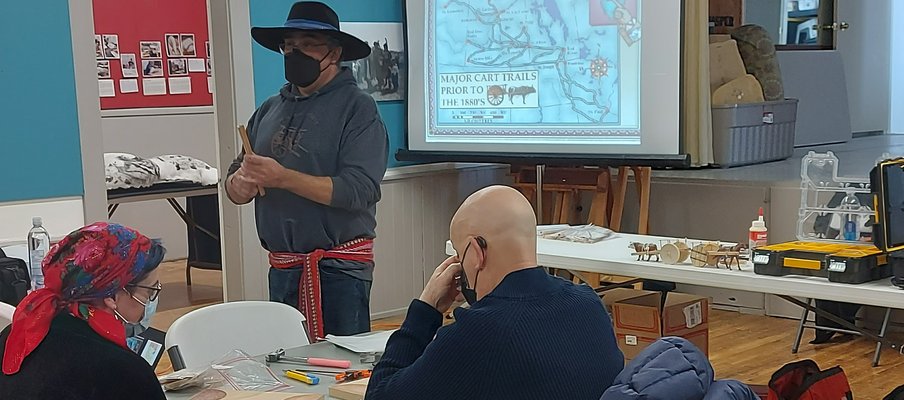Funds Reaching Métis Communities, Preserving Culture

Related Programs

The decision to ask Gabriel Dumont Institute (GDI) to take the lead on the Métis Cultural Development Fund (MCDF) was an easy one, according to Damon Badger Heit, supervisor, partnerships and inclusion, SaskCulture. “Sometimes the best thing you can do is get out of the way and push from behind,” he says, adding the program needed “to get back to its roots to be watered in order to flourish and grow.”
The renewal of the partnership between the two cultural organizations included a commitment to a new shared-delivery model for the MCDF. Shared delivery means GDI applies its strengths, leadership and expertise in Métis culture, community and connections, while SaskCulture contributes its Online Grant Platform technology and process proficiencies.
David Morin, from the Métis Culture and Heritage Department at GDI, says, “GDI is very happy to resume its relationship with SaskCulture,” going on to say, “GDI is now making decisions about what needs to be done to ensure the program reaches and connects to Métis communities and citizens to encourage uptake.”
Badger Heit says the strength of the applications since GDI has taken the lead signals the new program approach is working. “MCDF is supporting traditional activities, such as making Octopus Bags, Métis fiddling workshops and a culture camp for Métis youth, reflecting and fulfilling our goal of celebrating Métis culture – it’s really exciting,” said Morin.
Morin also points to the Métis Month of March project, offered by the Chinook Regional Library in Swift Current in partnership with several Métis Locals, as another excellent example. “They held workshops on traditional beading, Red River Cart building and jigging, which really showcased the incredible cultural richness of the Métis in the south.” He adds that many other people in the region took part, and took away new learnings about the beauty, the talent and the history of Métis.
Badger Heit says that the changes in program delivery demonstrate SaskCulture’s commitment to building more equitable and reciprocal relationships with First Nations and Métis partners. “One of the core tenets of SaskCulture’s program review and renewal process is ensuring the voices and participation of First Nations and Métis is central, or as Indigenous people say 'nothing about us, without us'."
He adds, “SaskCulture wants to support a network active in Truth and Reconciliation so this approach models the understanding that sometimes you need to get out of the way and elevate other voices to lead that change.”
Morin wholeheartedly agrees. “We want our people making decisions for our people. We know our culture, our people and our needs better than anyone else.” He is confident that with GDI’s leadership, more Métis and communities will learn about MCDF and demonstrate the need for more investment in the program so that Métis culture can continue to be shared, preserved and promoted throughout Saskatchewan.

